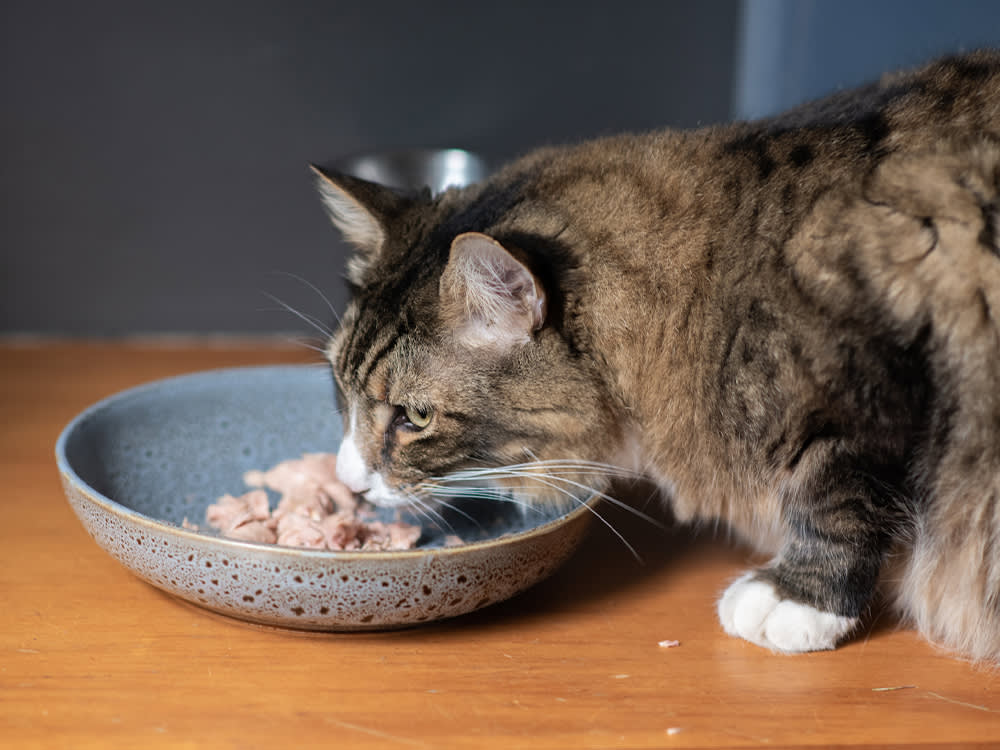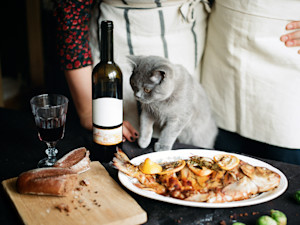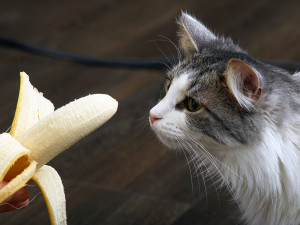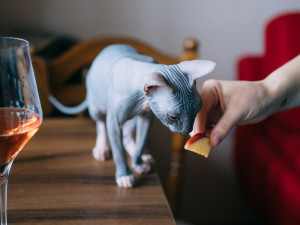Can My Cat Eat Tuna?
A spoon full of tuna might help the medicine go down, but it isn’t a balanced meal.
If your cat has a penchant for chattering at your goldfish or meowing incessantly when you’re searing Ahi, they’re probably hoping you’re starting to get the hint. Beyond going zero to 100 at the sound of a can opening, the pungent smell of tuna pretty much makes cats lose it — and it’s no wonder why. Cats are predators by nature and fish are about as prototypical prey as they come. Plus, if tuna’s good enough for us, it’s good enough for our cats, right? In small amounts, yes.
If you’ve ever eaten a whole sleeve of Oreos, you know all too well that too much of a good thing can end up being a bad thing — and the same goes for balancing your cat’s diet. As long as you’re putting their health first and consulting your veterinarian before making changes to their meal plan, you’re in the clear. We spoke with veterinarian and The Wildest Collective member Dr. Annette Louviere to get the download on cats and tuna, because when it comes to deciding what to feed your cat, there are plenty of fish in the sea.
Save on the litter with color-changing tech that helps you better care for your cat.
Can cats eat canned tuna?
Used to supplement your cat’s complete and balanced diet of cat food, tuna can be a nutritious treat for cats. Many commercial cat foods feature tuna as a main ingredient, which is your first hint that in moderation tuna can provide great health benefits for cats. It’s high in protein, low in carbs, and packs a punch of Omega-3s, which contains essential fatty acids that aid cats’ overall skin and coat health and reduce inflammation. According to Dr. Louviere, “Tuna shouldn't be used as a large part of the diet as it's not nutritionally balanced for our feline friends.”
While oil-packed may be the way to go for prepping tuna salad, cats should be treated strictly to water based canned tuna because added salt or seasonings can cause gastrointestinal distress and lead to long term health concerns such as weight gain, diabetes, and kidney disease. Tuna is a calorie dense food and consuming too much can lead to obesity in cats, making them vulnerable to other health issues.
How much do you spend on your pet per year?
Some cats may not tolerate tuna at all and may even suffer an allergic reaction. As with introducing any new food into your cat’s diet, it’s important to look for signs of discomfort such as scratching, diarrhea, and vomiting.
How much tuna can I give my cat?
The key to treating your cat to a tuna snack is not overdoing it. We know that cats enjoy the rich taste of tuna and that eating fish may help reduce their carbon footprint, but consuming too much can lead to serious illness, such as mercury poisoning. Signs of mercury poisoning include lack of coordination and balance, which can lead to injury in disoriented cats. Albacore has a higher concentration of mercury than other forms of tuna, which is why it’s recommended that cat parents opt for other preparations of tuna, including chunk-light.
On top of that, tuna prepared for humans can lead to malnutrition in cats unless paired with a complete and balanced diet. That’s why it’s important to look for a label that states your cat’s food is certified by the American Association of Feed Control Officials (AAFCO), meaning that your cat will get all the essential nutrients they need, in the correct ratio, and that it’s formulated for their life stage (kitten, adult, or senior).
Perhaps most frustratingly, cats that are fed tuna too often may start refusing their regular meals in favor of this tasty alternative. Cats are notorious picky eaters so giving your cat more reasons to turn their nose up at their dinner won’t serve either of your interests long term. In fact, treats should make up less than 10 percent of your cat’s daily caloric intake, which is why it’s so important to keep your cat’s diet in check.









